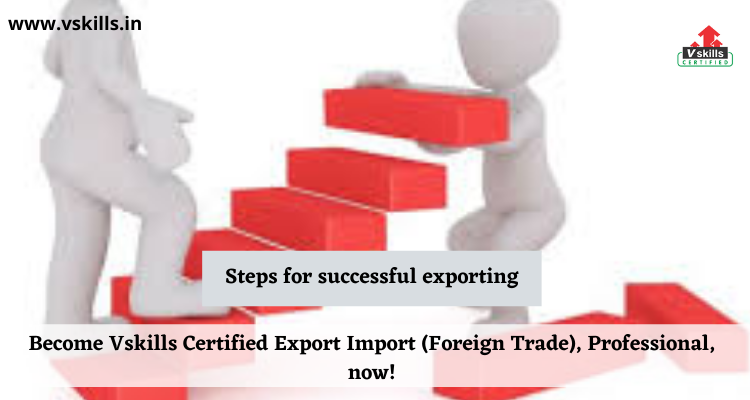Steps for successful exporting
Let’s learn about Steps for successful exporting:
- The right name: Words like ‘international’ or ‘overseas’ used in the name of the firm (Example- Vijay International) convey the message that the firm is engaged in the business of import/export.
- Registration: The firm has to be registered under the country’s prevalent law, such as the Company Act of India. The company would be registered in one of its various forms like proprietorship, partnership, private limited, public limited etc
- Permanent Account Number (PAN): The Permanent Account Number (PAN) needs to be quoted to open a bank account, to apply for the import export code (IEC) number and to claim tax exemptions and deductions under the Income Tax Act.
- Opening a Bank Account: The company needs to open an account with a bank dealing in foreign exchange. It makes sense to open an account with a branch which directly undertakes export-import documents and converts foreign exchange.
- Registering with the Value Added Tax (VAT) Office: The exporter need not pay VAT while making purchase for exports. To avail this benefit, the firm has to be registered with the VAT. The exporter needs to give the seller Form-H, along with a copy of the import letter of credit or export order.
- Obtaining the IEC number: The IEC number is the most important registration required by an exporter/importer No export or import for commercial purposes shall be made by any person without an IEC number. An IEC number can be obtained through an application to the relevant authority.
- Registration with Export Promotion Councils (EPC): Government has set up EPCs to provide information and to facilitate exports. The basic objective of EPCs is to promote and develop the exports of the country. Each council is responsible for the promotion of a particular group of products, projects and services. The EPCs keep abreast of the trends and various opportunities that exist in the international markets. They also offer professional advice to members in areas such as technology upgradation, quality and design improvement, standards and specifications etc. They also organize overseas delegations of its members in order to explore global market opportunities and promote interaction between exporting community and government.
- Registration with Export Credit Guarantee Corporation: Exporters should register with the Export Credit Guarantee Corporation (ECGC) to secure payment against political and commercial risks.
- Central Excise: Goods are subject to exemption from excise duty on the final product meant for export. Where exemption is not availed, the excise duty paid is refunded after actual export. Secondly, the refund of excise duty is made on inputs used in the manufacture of goods meant for export. Form ARE-1 has to be used in India for this excise clearance.
- Registration with Chambers of Commerce: It may be helpful to become a member of various chambers of commerce or a productivity council, or trade promotion organization recognized by Ministry of Commerce. This helps in getting a certificate of origin and many other social and networking events.
- Registration for Business Identification Number: It is important to obtain a PAN, based on Business Identification Number (BIN) from the DGFT registration office prior to filing for customs clearance of export goods.



